Defensive handgun skills are some of the toughest to learn. There are only two points of contact with the pistol, not to mention barrel lengths are much shorter than they are on long guns.
If you further complicate things by adding time limits and target discrimination, it gets even more difficult. Top this off with an inability to see; you have a recipe for disaster.
The only cure for this is training and good gear! While we can’t teach you everything we know about low light shooting, we can impart some tips and tricks to get you started.
So, keep your light handy and read on, because there are things that go bump in the night.
Top Low Light Handgun Tips
The tips below were gathered after a two-day low-light course I attended at Range Ready in Louisiana in addition to previous knowledge as a former law enforcement officer.
1. Choose a Quality Flashight
First and foremost, light selection is crucial for a number of reasons. You’ll want a quality flashlight or weapon-mounted light for several reasons, like durability, ease of use, and power.
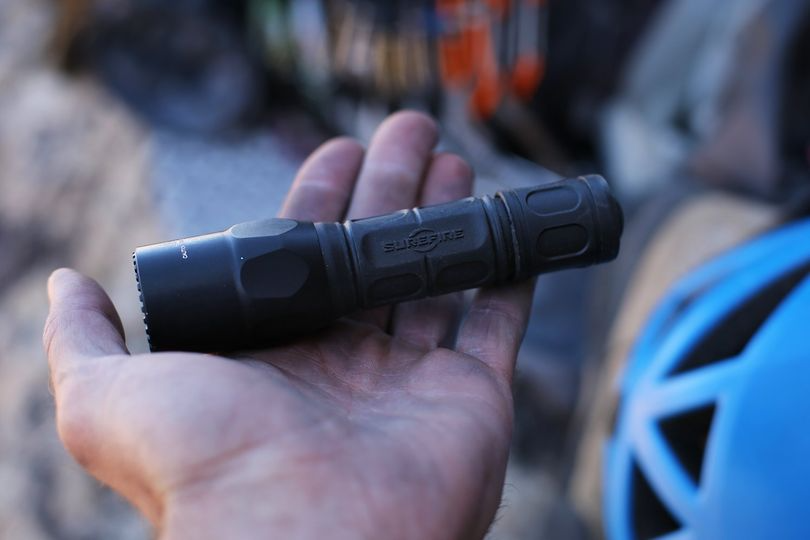
Be discriminating when you shop for a light, whether hand-held or weapon-mounted. At a minimum, your light should be 300 lumens.
In many normal conditions, lights with less power than this are unable to penetrate photonic barriers like dust or fog. Rest assured, if you have to fire shots, there will also be gun smoke in the air and you’ll really want to be able to see.
Prices accurate at time of writing
Prices accurate at time of writing
-
25% off all OAKLEY products - OAKLEY25
Copied! Visit Merchant
2. Don’t Rely on Just a Weapon Mounted Light
It’s super handy to have a weapon-mounted light, but one of the drawbacks is that up until you have a known threat, you shouldn’t use it to search.
Remember, anyone you light up, you are also muzzling. Keep in mind this is a crime in many states. So, a separate flashlight is crucial.
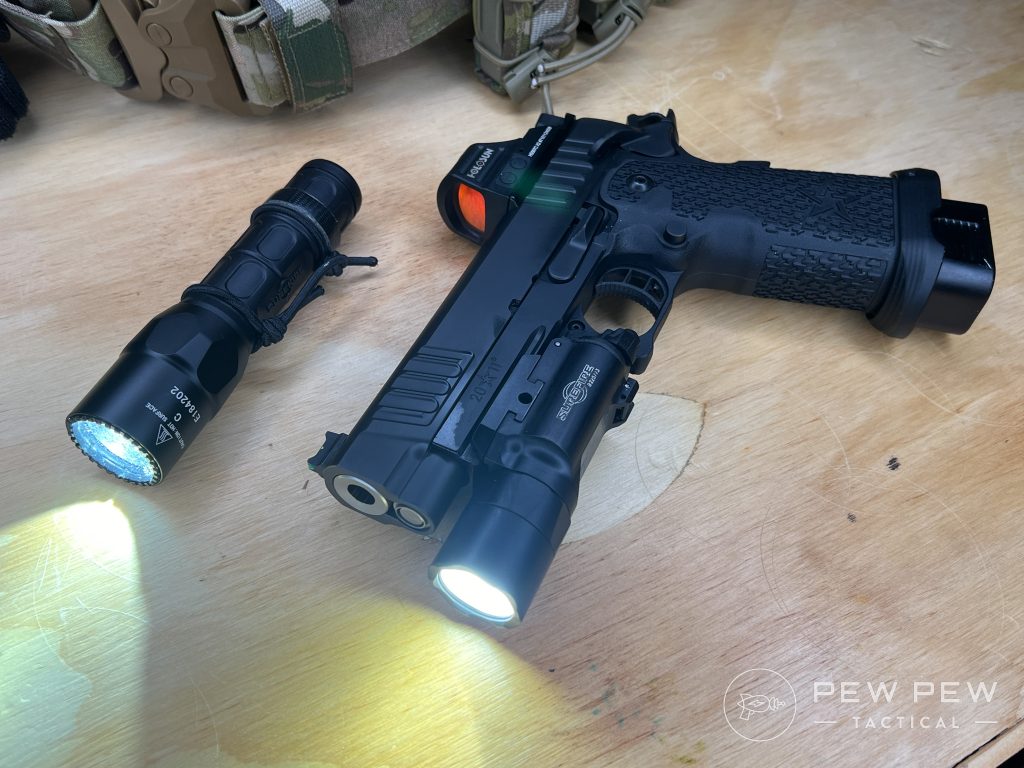
Alternatively, a good tactic for weapon-mounted lights is splashing. Without pointing directly at someone, you can bounce the light off of the floor or walls and generally get enough light to learn whether that person is a threat or not.
3. Holding the Light + Gun
For handhelds, use a technique from Kyle Lamb and tie a strip of bungee cord around your flashlight, creating a finger loop. This allows a few different one-handed techniques that keep your gun hand free.
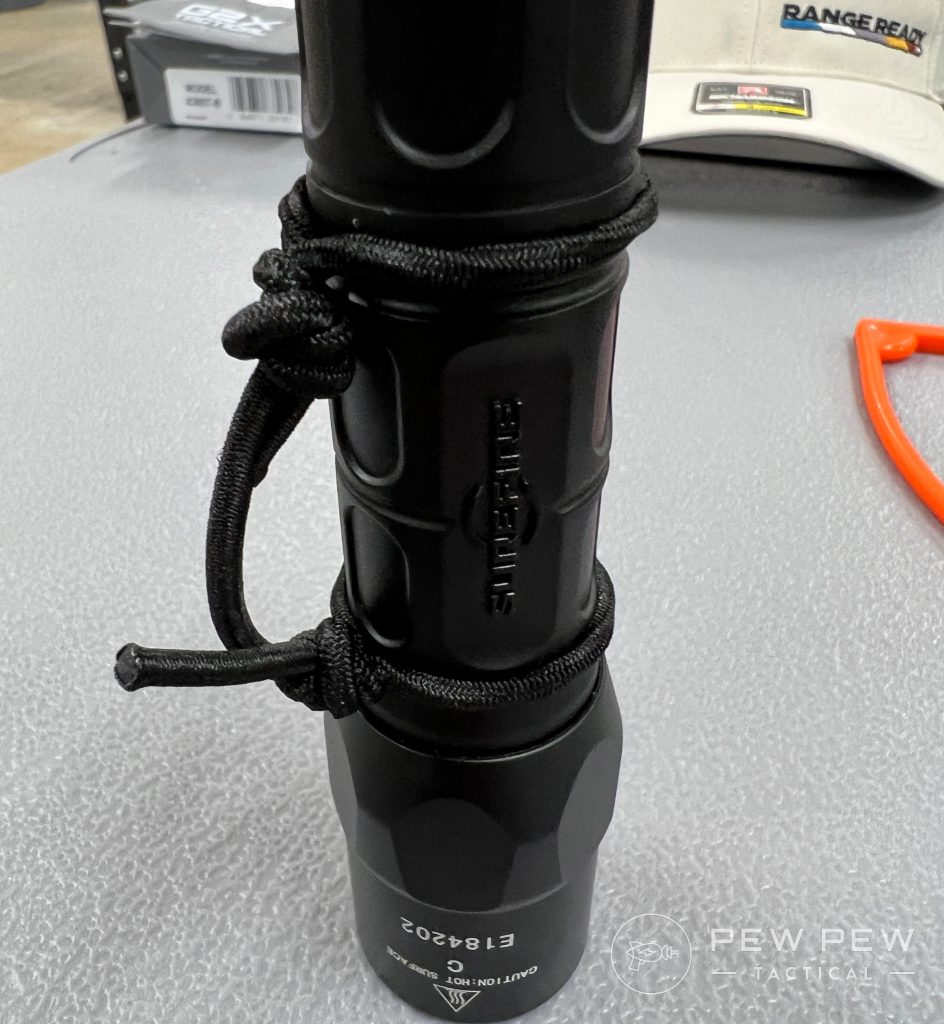
My favorite is having the flashlight over the top of my index finger on my support hand. I can push the button with the same side thumb to activate the light.
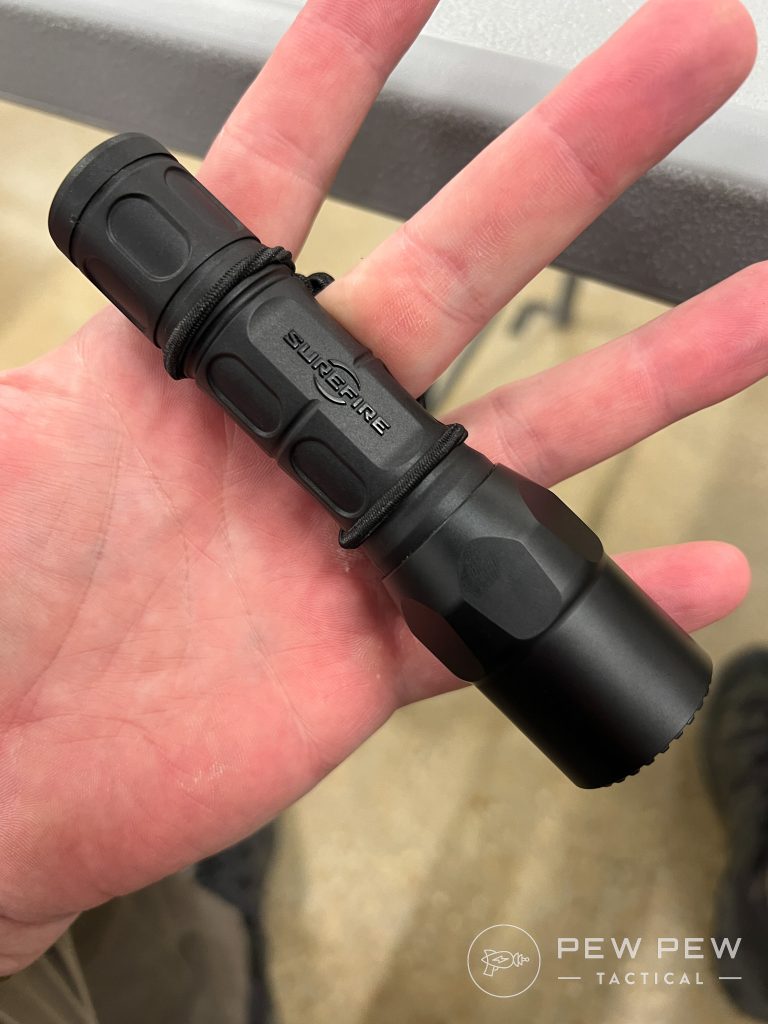
This allows me to keep my gun at a low ready while I scan with my light. If I see a threat, I can combine my hands and take the appropriate action.
If I’m shooting a gun with a weapon-mounted light while using this technique, I simply let go of the hand held flashlight. It rotates forward out of the way, and stays on my finger because of the bungee cord.
Another technique is holding the flashlight between the middle and ring finger on the support hand, then compressing to activate the plunger switch with the meat of the thumb. This isn’t the easiest to master.
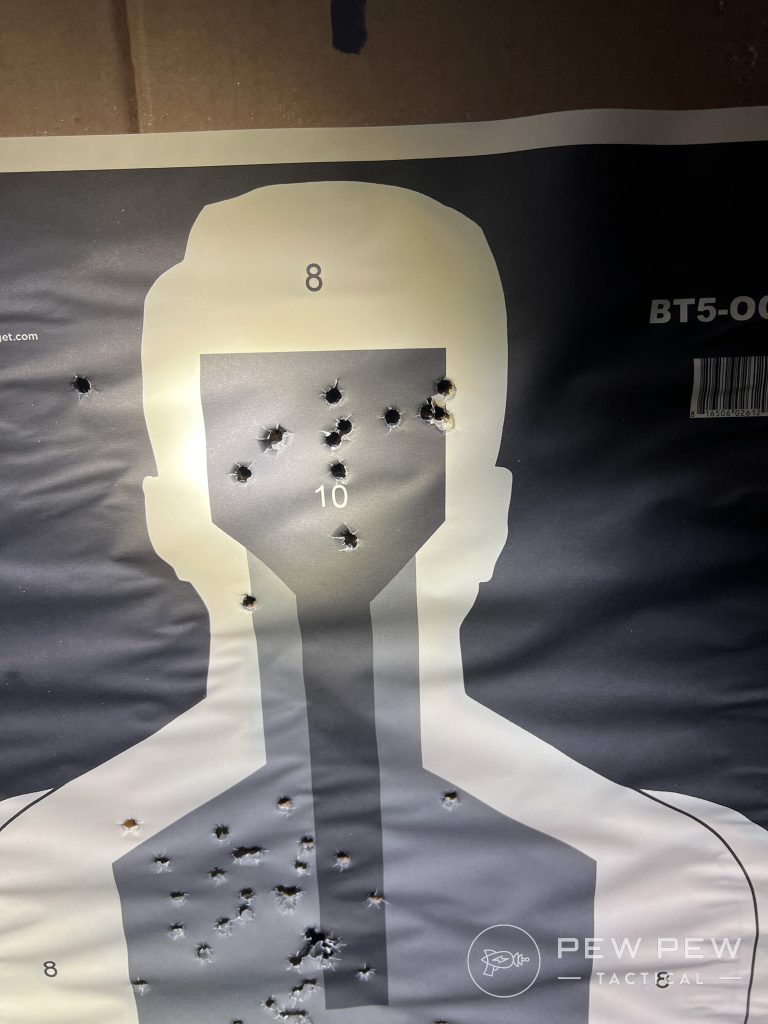
However, it allows you to mate up your support hand with your gun to provide a little extra support when shooting. It isn’t nearly as good as a two-handed grip, but at least you aren’t shooting in the dark.
4. Light Discipline
One of the most important ideas in this topic is light discipline. While these tools offer great advantages in the dark, they also let other people know where we are.
For handhelds, use the Umbrella Technique to light up a room. This provides ample lighting without necessarily pinpointing exactly where you are.
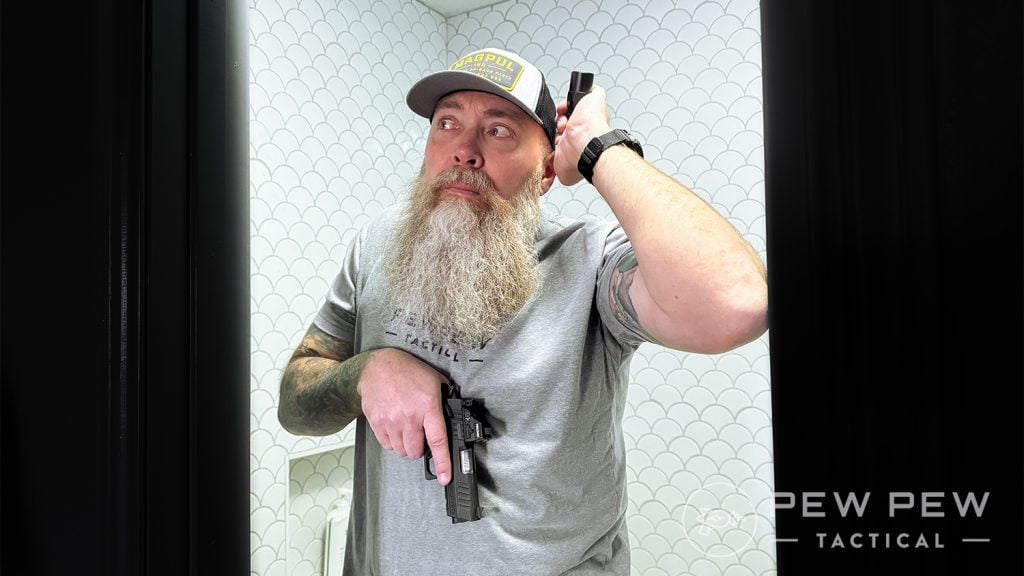
Another tactic for indirect lighting is baseboarding. By lighting up the baseboards along walls, you can get enough light bounce to get the general idea of a room and it’s obstacles without pinpointing your location to others.
Learn to take a snapshot of the room you’re in. Light it up, pick a destination, then move to it after you turn off your light.
Restrict yourself to infrequent use. There is no reason to leave your light on and travel all around. See what you need to see, turn off your light, then move.
When using weapon-mounted light, learn to use the momentary switch so you aren’t utilizing the constant on. This can be very challenging to put into practice.
It’s difficult to hold a momentary switch and keep it on while firing. Using the constant on is a good alternative when shooting, but make sure you can turn it off as soon as you’re done.
For the very purposes of light discipline, most companies make their weapon-mounted lights a little difficult to turn on. This prevents inadvertent activations which might prove disastrous in the right setting. This means you’ll need to practice using your equipment. (More on that in a minute)
For both types of lights, do not illuminate the floor near an internal door. Anyone on the other side can plainly see your location and get a clue that you’re about to enter.
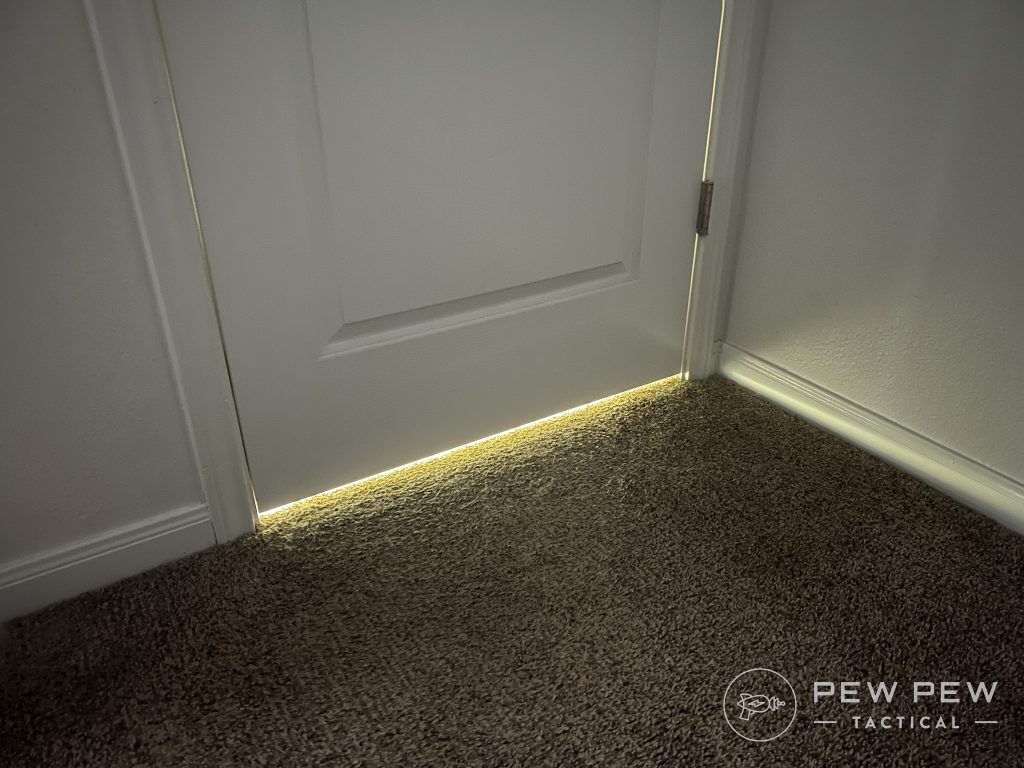
Additionally, when you’re about to enter or are clearing a doorway, consider light backsplash. The doorjamb and door will reflect light back onto you for anyone inside the room to see if you’re not careful—a bad development while standing in the fatal funnel.
5. Practice
It might seem simple, but one of the most important aspects of learning and building these skills is practice.
It’s even more important if you run an external safety and need to implement light activation in your draw stroke.
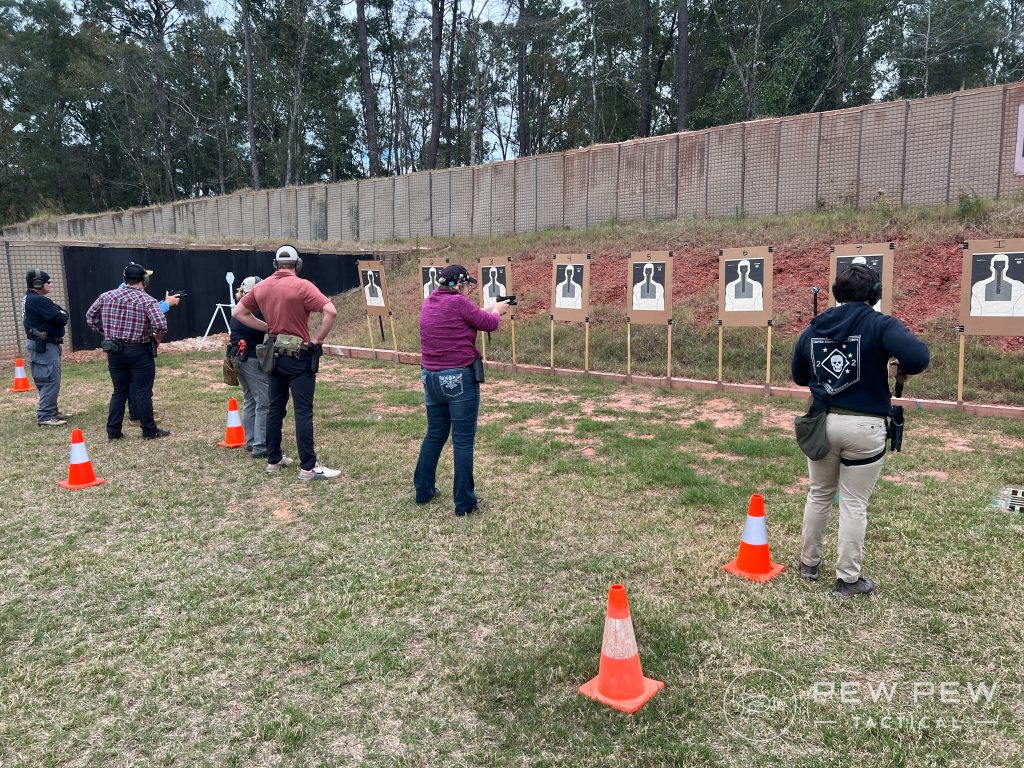
Head out to the range and get some repetitions on drawing, activating the weapon-mounted light, firing, then turning the light off before holstering.
Consider reloading. This will be challenging because you should deactivate your light before conducting your reload.
Final Thoughts
The best way to implement this knowledge is to attend a training.
There is a lot of skill stacking that has to occur when you add lighting to pistol use. It is not easy, requires practice to learn, and practice to upkeep.
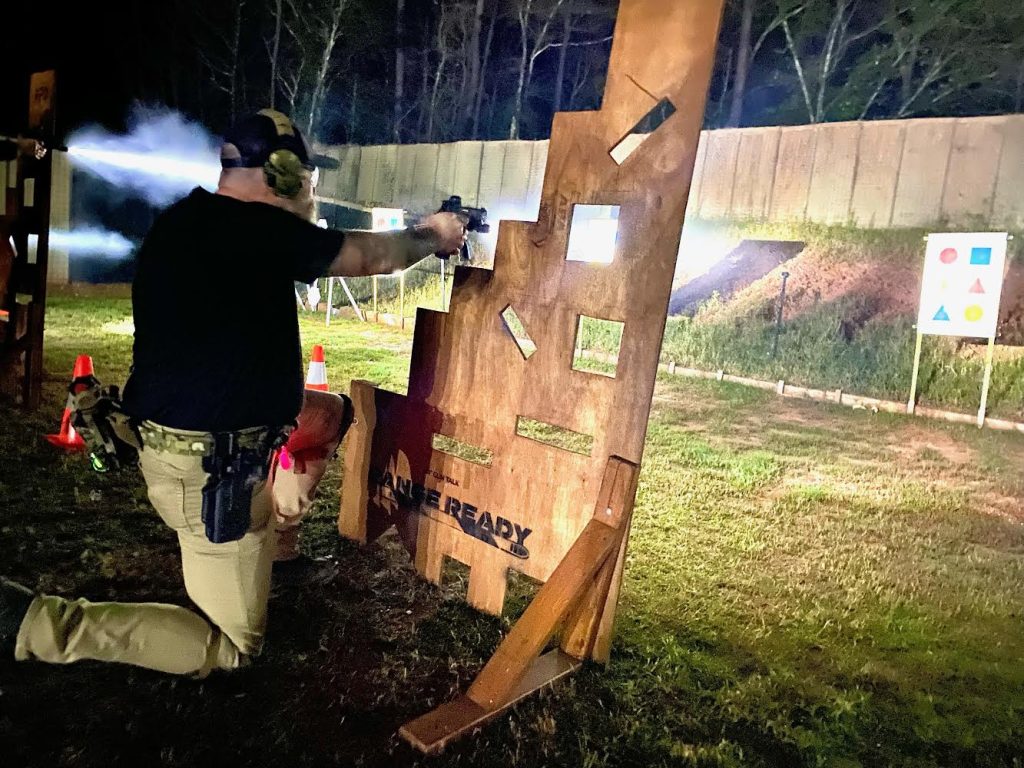
Using these skills and the right gear, you too can keep the advantage in the dark.
What’s your level of low light readiness? Let us know in the comments below. For more information on lights, check out the 5 Best Tactical Flashlights Under $100!

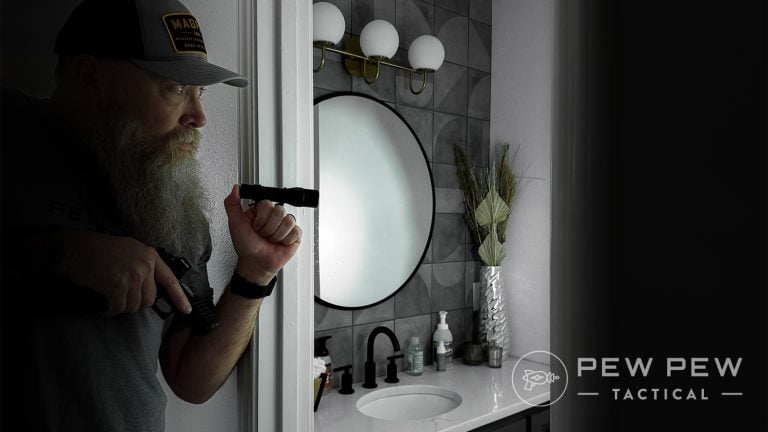
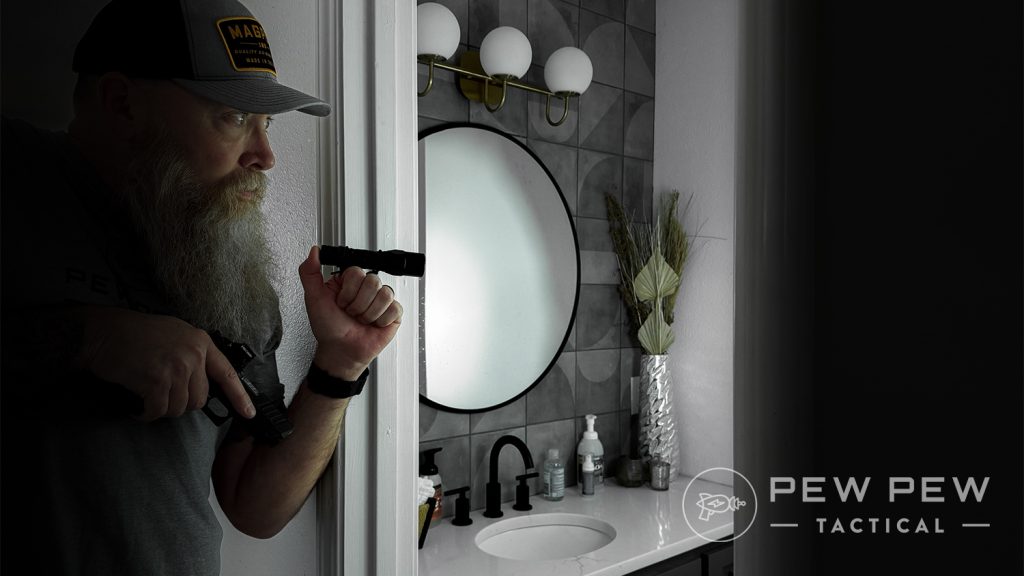
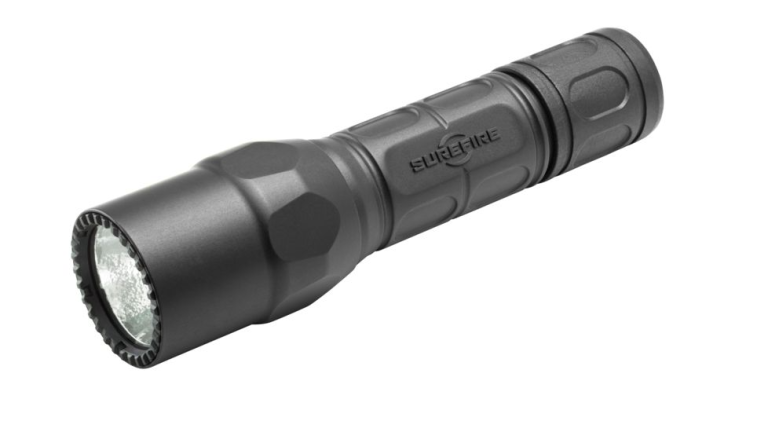



4 Leave a Reply
Affiliate marketing is the internet version of the tail wagging the dog.
How so Charles?
Great article, umbrella even for dark indoor ranges works great!
Thanks Sam!